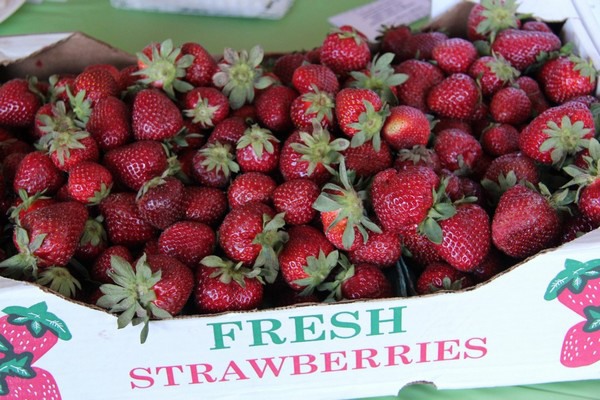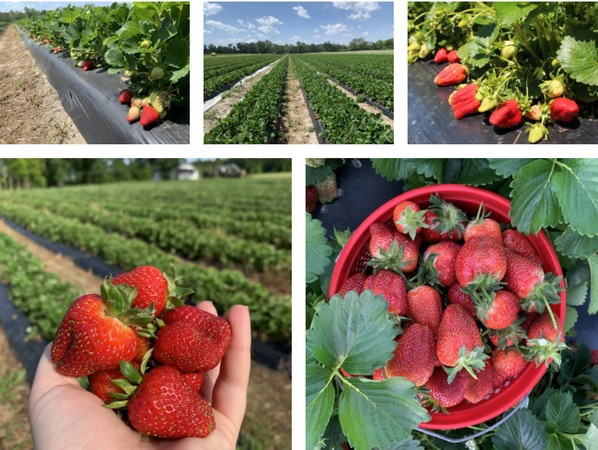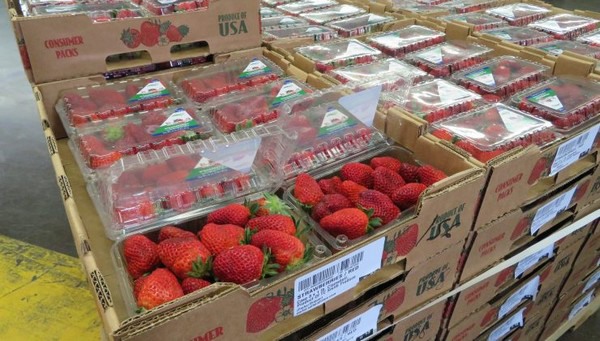This week NCDA&CS will deliver four tractor-trailers loads of North Carolina-grown strawberries to schools across the state.
The deliveries happen thanks to the N.C. Farm to School program – a collaborative effort between the department’s Food Distribution and Marketing divisions. The program offers 26 North Carolina-grown foods to the state’s schools – from strawberries, apples, peaches and blueberries, to tomatoes, sweet potatoes and leafy greens.

North Carolina strawberries are in season now and being served in participating school systems across the state as part of the Farm to School Program. “If it’s grown in the school season it tends to be in the Farm to School program,” said Food Distribution director Gary Gay.
The state’s strawberry season comes along as the school year is entering the home stretch. “We really go out with a bang each year because strawberries are our most popular crop. You can’t beat the flavor, and from a school nutrition perspective they fit into the red/orange category and help schools meet the requirements of the USDA programs. Plus, they’re versatile and can be served multiple ways,” said Heather Barnes, NCDA&CS marketing specialist who works on Farm to School. “Kids love North Carolina strawberries, so we love being able to instill that love in them so they continue to support North Carolina farmers.”

Christina Wrenn, is the NCDA&CS marketing specialist who coordinates orders and other logistics with farmers who supply strawberries for the program. She also loves that children in schools could be convinced to favor North Carolina products because of the better flavor. Strawberries are a great example.
“Just like the many other products offered in the program, strawberries from North Carolina will be sweeter and juicier – just better tasting – than anything coming from other states,” Wrenn said. “When they get strawberries from North Carolina I think it really does convince them to buy North Carolina produce because they can taste the difference.”
Barnes describes the program as a win-win because schools get high quality food from within the state, and farmers benefit from the revenue stream of selling to schools. The Marketing and Food Distribution divisions work together to make that connection operate smoothly. It’s been a partnership since the program started in 1997.

“It was the same concept that we were doing with distributing USDA food. We just had to find a way to get the orders from schools,” Gay said. “The people in the Marketing Division already knew the farmers, and we in Food Distribution knew the schools, so it made sense for us to work together.”
Depending on the crop that’s in season, the number of farmers participating varies throughout the school year, just like the number of schools ordering fluctuates. The number and size of the farms vary too. For strawberry season, the five supplying farms range in size from about 20 acres to larger than 100 acres. For some farms, the N.C. Farm to School program is a significant source of revenue.
Out of 115 public school systems, about 85 order through the program, which is an option for school nutrition directors to source food grown within the state. Some order once each year, while others order just about every food the program offers throughout the school year. The choices are growing too. N.C. Farm to School recently added a tomato medley, green beans, frozen produce options and hamburger. Beef is the first item in the program that isn’t a plant.
“People think they know what school nutrition is, but they don’t realize the amazing things school nutrition directors are serving. There are some great local foods being used in school nutrition programs,” Barnes said.
Read more at the blog of the North Carolina State Goverment website.
